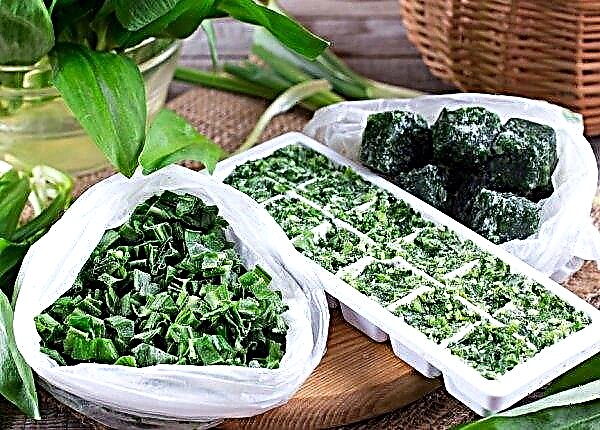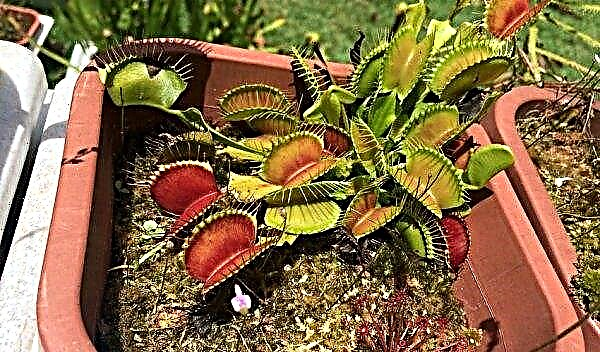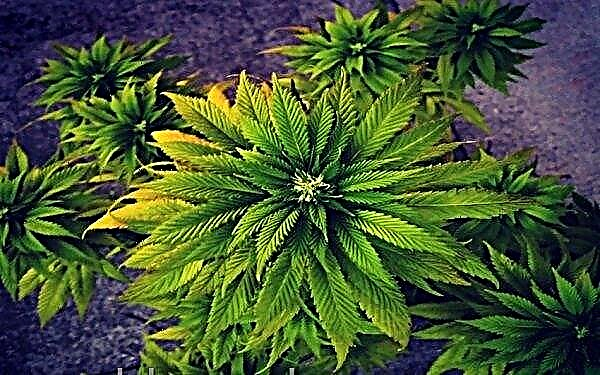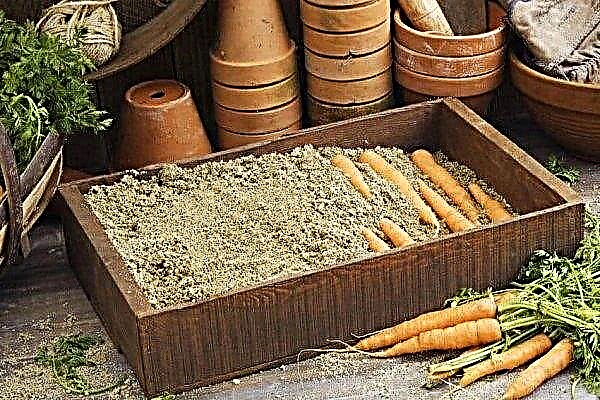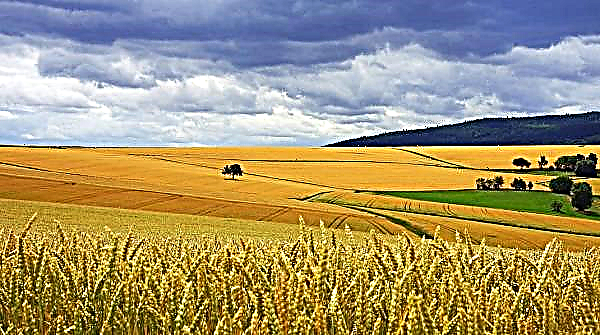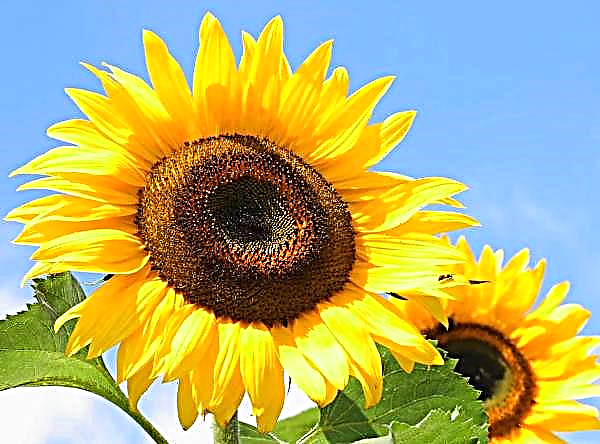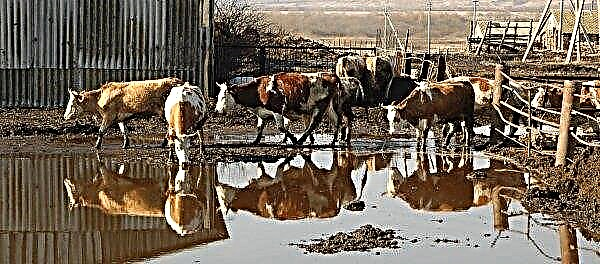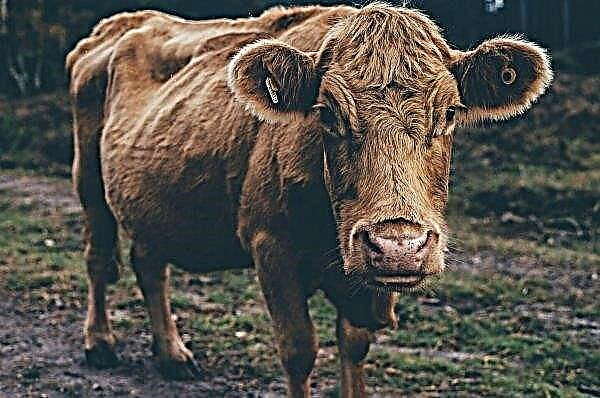Meeting a coniferous plant in private gardens is not a problem today, because the market offers a variety of varieties of such crops, not to mention the variety of their varieties. For true connoisseurs of conifers, the Tsuga canadensis Jeddeloh, which is perfectly assimilates in various regions of the Russian Federation, it is only necessary to provide the bush with suitable conditions for growing. What exactly is worth knowing about the description and features of cultivating such a plant in your area, and how to prevent the occurrence of problems - read in this article.
Botanical Description
Dwarf Tsuga Canadian Jeddeloch It was bred back in the 50s of the last century in the German nursery of the city of Oldenburg and still does not lose popularity among Russian and foreign gardeners. It is best used in a humid, moderately cool climate, especially if planted in shady ravines or on well-drained fertile soils.

Ten-year-old plants reach only a half-meter height, with the same diameter of a semicircular crown, with spiral branches that often create a funnel-shaped depression in the center. The maximum growth rates of an adult culture reach 5 m in height, but with home cultivation it is rarely allowed to grow to such values.
Did you know? In the wild, tsugs are found not only in the form of shrubs, but also in the form of tall trees, many of which, upon closer examination, turn out to be pseudo-servs. The highest of felled specimens of this plant reached 133 m in height, with a crown diameter of about 4 m.
The needles are soft to the touch, light green in color, spirally located along the stems. In the autumn-winter period, its color changes to red, but the needles remain as short (up to 1-1.5 cm in length) and shiny. The shoots of the plant are thin, hanging down, radiantly moving away from the trunk.
The annual growth of branches is not more than 5 cm, so the plant does not need frequent pruning. Fruiting of the bush begins already in the first year of growing on the site, and the fruits are presented in the form of small cones on a short petiole, the length of which does not exceed 2 cm.
Landscape design application
Many varieties of Tsugi have long been used in landscaping for landscaping summer cottages and territories of private estates, so it is not surprising that the attractive dwarf variety Jeddeloch also found its application in this area.
Typically, culture is planted as part of single and group plantings, complemented by rock gardens and rockeries, and even planted along artificial reservoirs.
The plant fits perfectly into any composition of both small and rather vast territories, in good harmony with other varieties of conifers. Sometimes Tsugu are combined with deciduous crops, placing them along fences or on rocky slides.
 With proper care, most of the year you can enjoy the bright green color of the bush, which can easily serve as a backdrop for colored vegetation in your area.
With proper care, most of the year you can enjoy the bright green color of the bush, which can easily serve as a backdrop for colored vegetation in your area.
Place requirements
Tsugi Jeddeloh is resistant to frost, but it is more difficult to tolerate drought and prolonged hot weather.. The best place for planting a bush is small, well-moistened areas with nutritious, non-calcareous soil of neutral acidity. In addition, it is good if the selected place is not constantly illuminated by the sun's rays, because the plant is very sensitive to prolonged exposure to the sun and may become covered with dark spots.
In open areas, it is worth taking care of protecting the shrub from cold gusts of wind, because, despite moisture lovingness and shade tolerance, it does not tolerate the effects of cold wind flows. This also applies to polluted air in the city, so if possible it is advisable to place a tsug away from busy roads and enterprises with a high level of chemical emissions into the environment.
Important! If a group planting of seedlings of Canadian Tsugi is planned, then when choosing a place of cultivation, it is worth considering the distance between neighboring seedlings, which should be at least 1.5 m, and even taking into account the small size of the varietal variety described.
Seedling selection and preparation
Most Tsugi Jeddeloh seedlings are sold in separate containers, so all you can do when buying to make sure the quality of the plant is to inspect its aboveground part. The color of the needles should be solid, without signs of yellowing or wilting, otherwise it is worth suspecting the presence of diseases or pests, which in the future threatens with considerable problems of cultivation.

The bark of the shoots of a healthy plant will always be elastic, gray-brownwithout soft rotten places or deep cracks. If possible, it is worth examining the roots of the selected seedling, which should also be elastic and without any damaged areas.
Confused in one lump, weakly sprouted roots indicate insufficient care and a considerable age of the plant, because of which there may appear problems with its survival in a new area. Such seedlings are best avoided, giving preference to half-meter young varieties with sprouted roots in a pot.
Step-by-step instruction
The landing of the Canadian Tsugi Jeddeloh can be planned for the end of April or mid-May, although the possibility of carrying out landing activities from August to September is not ruled out.
Important! After landing, the root neck of the Tsugi Jeddeloh should be at 1–2 cm above the soil surface, otherwise it is impossible to guarantee rapid survival and full development of the bush in a new place.
The planting process of the purchased seedling involves the implementation of several sequential actions:
- First, dig a suitable hole in the size of the rhizome, a depth of at least 70 cm.
- Fill its bottom with a 15-cm layer of sand or small pebbles that will perform a drainage function.
- Pour into the hole a soil mixture of turf and leaf soil, as well as sifted sand, in a ratio of 2: 1: 2. If necessary, it can be replaced with a mixture of compost and garden soil, combined in equal proportions.
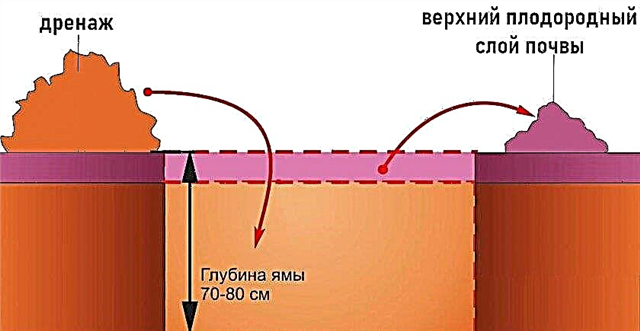
- By transshipment method, move the seedling from the shipping container to the prepared pit and fill it with the remaining soil, densely compacting the entire volume of the pit.
- Having formed a near-stem circle, abundantly water the Tsugu, spending at least 10 liters of water on one plant, and then fill the surface of the earth with a 5-centimeter layer of pine bark, gravel or wood chips, which will allow for a long time to keep moisture at the root of the plant.
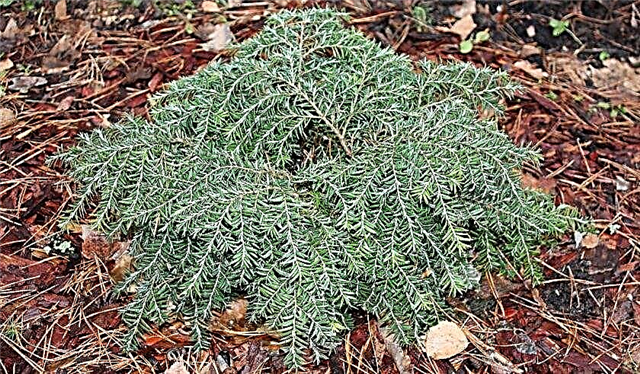
Care Features
As with the cultivation of other conifers, watering, top dressing, loosening and mulching of the substrate will be especially important when caring for Canadian tsuga, which also affects the growth and development rate of the coniferous representative. Of course, each of these actions will have its own characteristics, which are important to remember at the planting stage.
Watering and sprinkling
Because the Tsuga Canadian Jeddeloh refers to water-loving crops, then in the hot season it will have to be regularly moistened, pouring at least 1 bucket of water heated in the sun under each bush. The regularity of such a procedure is on average 1-2 times a week, but in order not to err in their calculations, it is better to monitor the state of the upper soil layer of the near-trunk circle.

As soon as the land ceases to crumple in a fist - this is a signal to the next, possibly unplanned watering of plants. Sprinkling will also be a no less useful procedure in the summer heat, but it is advisable to carry out irrigation of needles only after sunset in order to avoid the appearance of burns and dried places on the crown of the bush.
Did you know? The classification of the Canadian Tsugi first appeared in the scientific literature in 1763, in the second edition of Species plantarum. Karl Linnaeus described the plant, then calling it “Pinus canadensis”, but the more modern “name” it received only in 1855, thanks to the French botanist Eli-Abel Carrier.
Feeding and mulching
When grown on initially nutritious soils, Tsuga Jeddelokh does not need regular feeding, especially if compost or any other fertilizer was used during planting.
After several years of cultivation, it is possible to enrich the soil in the near-stem zone by autumn feeding with a compost solution (200 g per bucket of water) or with prepared phosphorus-potassium compounds, which are also dissolved in water, and then the coniferous bushes are added to the prepared solution.

When growing Tsugi, it is better not to use nitrogen-containing preparations at all or to limit them to a minimum quantity of once every 2-3 years (For example, in the fall in the near-stem zone, a thick layer of humus can be decomposed, the nutrients of which will enter the deep layers of the earth during the next watering).
To preserve the maximum amount of moisture and nutrients in the root system of the plant, you can cover the surface of the trunk zone with a 5-cm layer of peat, pine bark or sawdust. If possible, sometimes use straw, changing this shelter several times during the season.
 It is best to mulch the soil soon after the next watering and loosening of the substrate, when the moisture is completely absorbed into the ground, but it still remains loose and breathable.
It is best to mulch the soil soon after the next watering and loosening of the substrate, when the moisture is completely absorbed into the ground, but it still remains loose and breathable.
In general, the cultivation of the Canadian Tsugi Jeddeloh can not be called a very difficult task, and if the gardener already has experience in planting and caring for conifers, then he will surely cope with this. However, having carefully studied all the features and requirements of this shrub for planting and further care, even beginners will be able to avoid serious problems only by enjoying the cultivation of the described coniferous representative.



